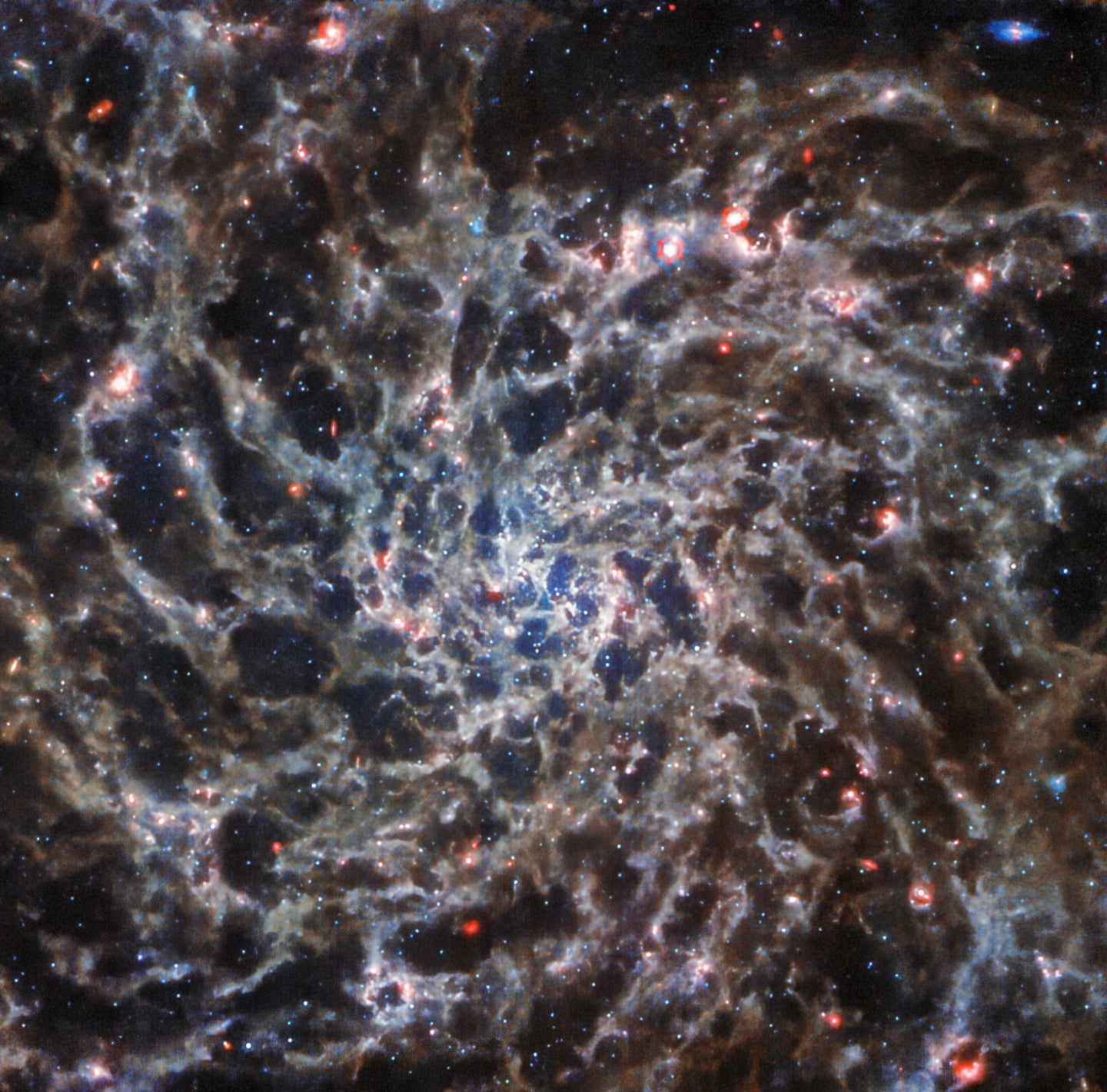See a spiral galaxy’s haunting ‘skeleton’ in a chilly new space telescope image
Spiral galaxy IC 5332 is more than 29 million light years away from Earth.

Some skeletons are more sparkly than scary. A new image of a far-off galaxy shows us that what lurks underneath a spiral galaxy can be just as spectacular as what our eyes can see. The new images taken by the James Webb Space Telescope’s Mid-InfraRed Instrument (MIRI) show IC 5332, a spiral galaxy over 29 million light years away from the Earth in the constellation Sculptor. It has a diameter of roughly 66,000 light years, making it slightly larger than our Milky Way galaxy.
The MIRI aboard the new telescope observes the furthest reaches of the universe and can see infrared light, so it’s able to peer through the galaxy’s clouds of dust and into the “skeleton” of stars and gas underneath its signature arms. MIRI basically was able to take an x-ray of a galaxy, revealing IC 5332’s bones and a world that looks different, yet somewhat the same.
[Related: The James Webb Space Telescope’s first image shows the universe in a new light.]
The dust between the arms of the galaxy virtually disappear in this new image, and it also shows some blood-red stars that were missed or blocked in previous pictures taken by the three-decade old, but still kicking, Hubble Space Telescope. Comparing and contrasting these the two images will help astronomers learn more about how stars, dust, and gas interact within swirly spiral galaxies and the specific properties of IC 5332.

According to the European Space Agency (ESA), obtaining observations in the mid-infrared range like the scale that the JWST can see, is incredibly challenging from Earth, partially because Earth’s atmosphere absorbs most of the light. The heat from the atmosphere also complicates things. The Hubble can’t observe the mid-infrared region because as its mirrors weren’t cold enough, meaning the “infrared radiation from the mirrors themselves would have dominated any attempted observations,” writes the ESA.

[Related: Neptune’s faint rings glimmer in new James Webb Space Telescope image.]
MIRI operates colder than the rest of the observatory aboard the JWST at a chilly -447 degrees Fahrenheit. That means that MIRI operates in an environment only around a few degrees warmer than absolute zero (-459.67 degrees Fahrenheit), or the lowest possible temperature based on the laws of thermodynamics. This super cold environment is needed for MIRI’s highly specialized detectors to function correctly.
IC 5332 shows up as a pristine image of a spiral galaxy in the wavelengths of light that are visible to the human eye, but this new image shows just how much goes into those dreamy swirls. This galaxy is also notable because it is almost perfectly face-on with respect to Earth, which allows us to better see the symmetrical sweep of its spiral arms from our corner of the universe.
CORRECTION October 3, 2022: A previous version of this article said 29,000 light years when IC 5332 is 29 million light years away. We regret the error.
CORRECTION October 12, 2022: Conversions between Celsius and Fahrenheit have since been updated.
